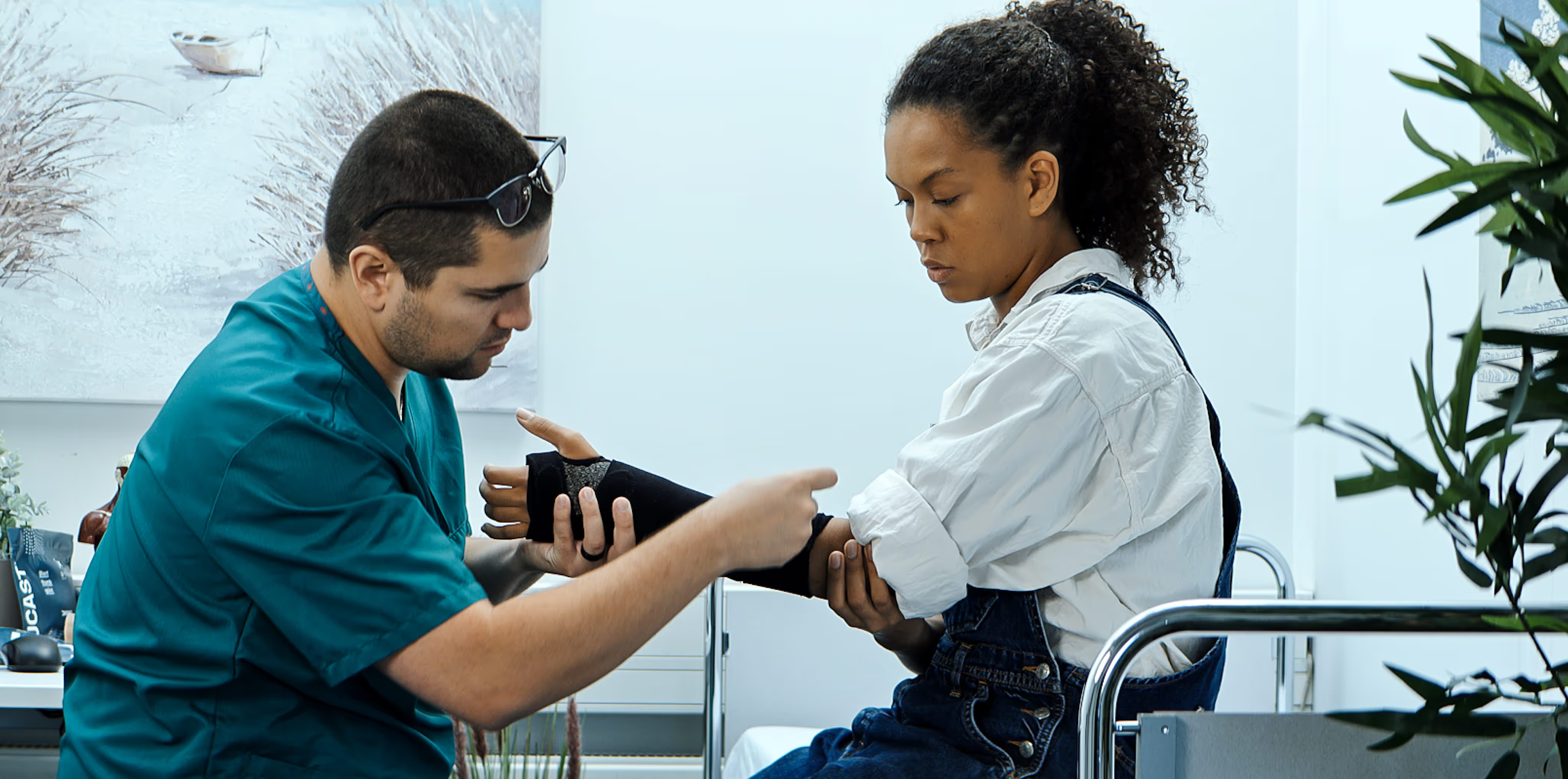If you work in fracture treatment, you’ve probably treated a metacarpal fracture. They make up about 40% of all hand fractureand are some of the most common hand injuries. In this blog, experienced cast technician and Dassiet COO Michael Lindroos shows how to apply the UCAST metacarpal splint and gives tips on supporting your patients’ recovery.
A young athlete with a sports injury, a manual laborer who had an accident at work, and an older woman who has taken a fall. These are the three typical metacarpal fracture patients you encounter at your practice. They will present with pain, swelling, bruising, and limited movement.
Metacarpal fractures don’t usually require surgery. In stead, these injuries are treated by immobilizing the arm. You can treat all metacarpal injuries with the UCAST metacarpal splint, whether they need surgery or not. Once you have confirmed the fracture via x-ray, it's time to apply the splint.
1. Prepare your UCAST
Start by removing the splint from its packaging and placing it in either a flatbed heater, or express heater. You can also warm the splint in hot water. In that case, place the whole unopened pouch under water – don't open the package – this is important!
Heating times will vary slightly depending on the heating method you choose – check the user instruction for specifics. In our express heater the splint will warm up in approximately 100 seconds.
After the splint has softened and warmed up, carefully lift it from the heater and place it onto the Unitex wrap. Apply light pressure to make the splint grip on the fabric.
2. Apply UCAST to your patient
Once you have applied the splint to the bandage, gently place UCAST over your patient's arm and wrist. The splint will stay pliable for 3–5 minutes, which gives you plenty of time to work on your shape.
Start molding from the fingers using a light touch. If necessary, you can buddy strap any injured digits to reduce the risk of rotational deformity. Secure the splint on the hand by wrapping the bandage under the patient’s palm.
Next, gently shape the splint onto your patient's arm and wrist. Wrap the rest of the bandage around the arm to secure the splint in place. The fit should be snug but not too tight – ensure you can insert a finger between the brace and skin.
Finally, gently create the appropriate shape: 20 degrees wrist extension, MCP join 60–70-degree flexion, and IP joint extension2.
3. Advise your patient about what’s next
The UCAST will be fully rigid in 5–10 minutes. While the splint cools down and hardens, you have time to discuss any questions your patient might have and instruct them on how to best take care of their splint and recovery.
If you suspect your patient might be non-compliant, the UCAST package includes strong two-sided tape you can use to secure the brace in place. Often non-compliant patients take the splint off because it’s uncomfortable. You can adjust UCAST at any point of the treatment process simply by using a heat gun, which will help you make the most comfortable splint for your patient.
If your patient is the active type, you can instruct them on how to clean the splint and even wash and re-wrap the bandaging themselves. Keeping the splint and bandage clean is easy and will help avoid skin issues. Instruct the patient to wipe the UCAST splint with a small amount of antimicrobial soap and water. They can also use soap and water to wash the skin under the splint. Remind your patient to dry both the skin and splint carefully before re-application.
Follow-up visits will go by quicker with UCAST because you can modify the same device instead of making a new one from scratch. This way, you can also cut down on material waste and costs. Metacarpal fracture patients will often be prescribed hand therapy to support recovery. Visits will be easier thanks to UCAST being easy to remove and re-apply.
Do you have questions about UCAST? Our experts will be happy to help!
Note: If you suspect you have a fracture or other injury, always consult your doctor. UCAST splints should only be applied by medical professionals.
References
1. Malik S, Herron T, Rosenberg N. Fifth Metacarpal Fractures. [Updated 2021 Aug 11]. In: StatPearls [Internet]. Treasure Island (FL): StatPearls Publishing; 2022 Jan-.
2. Tiel-van Buul MM et al, The value of radiographs and bone scintigraphy in suspected scaphoid fracture. A statistical analysis. J Hand Surg [Br] 1993;18:403-6.




.avif)